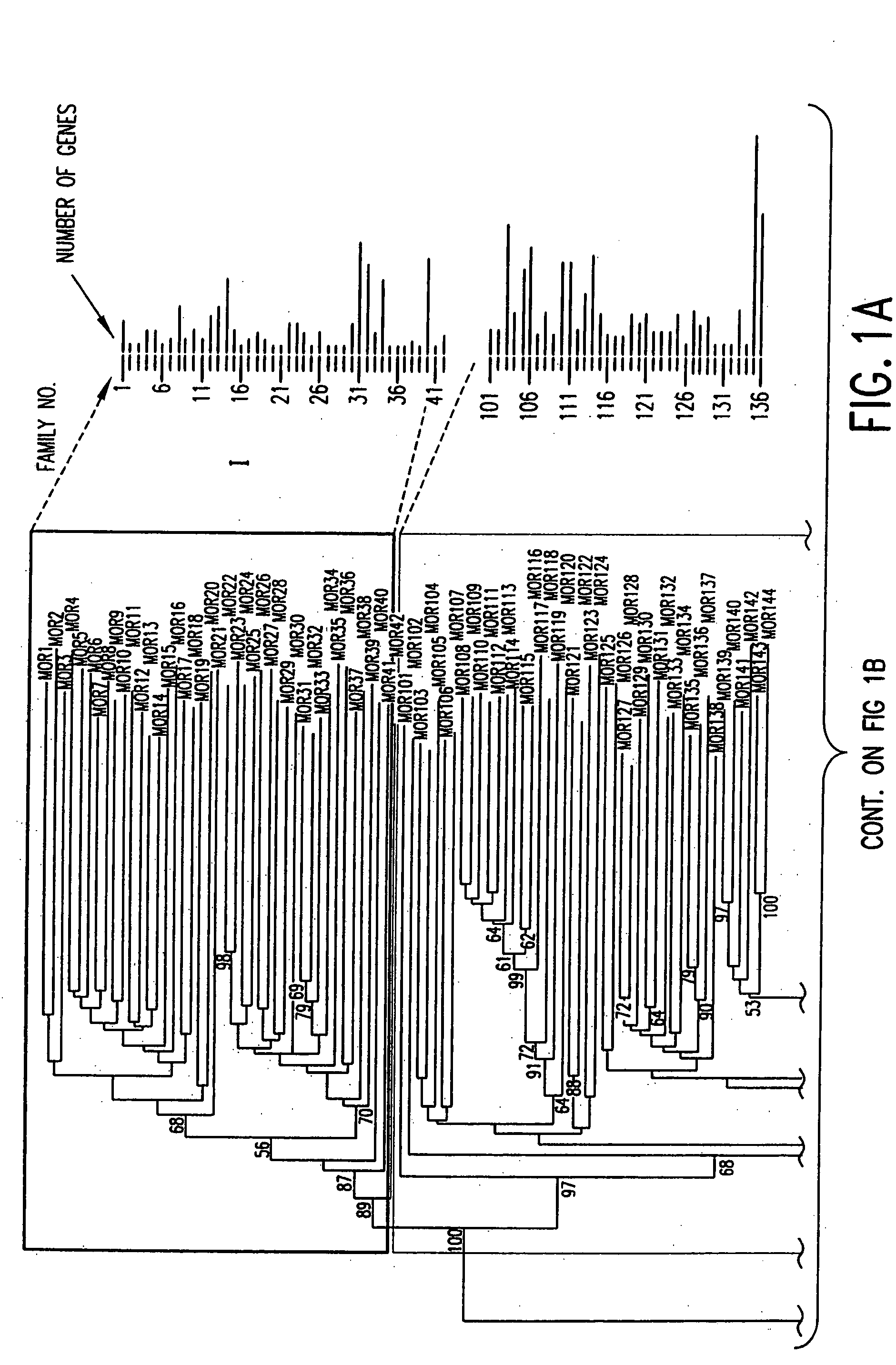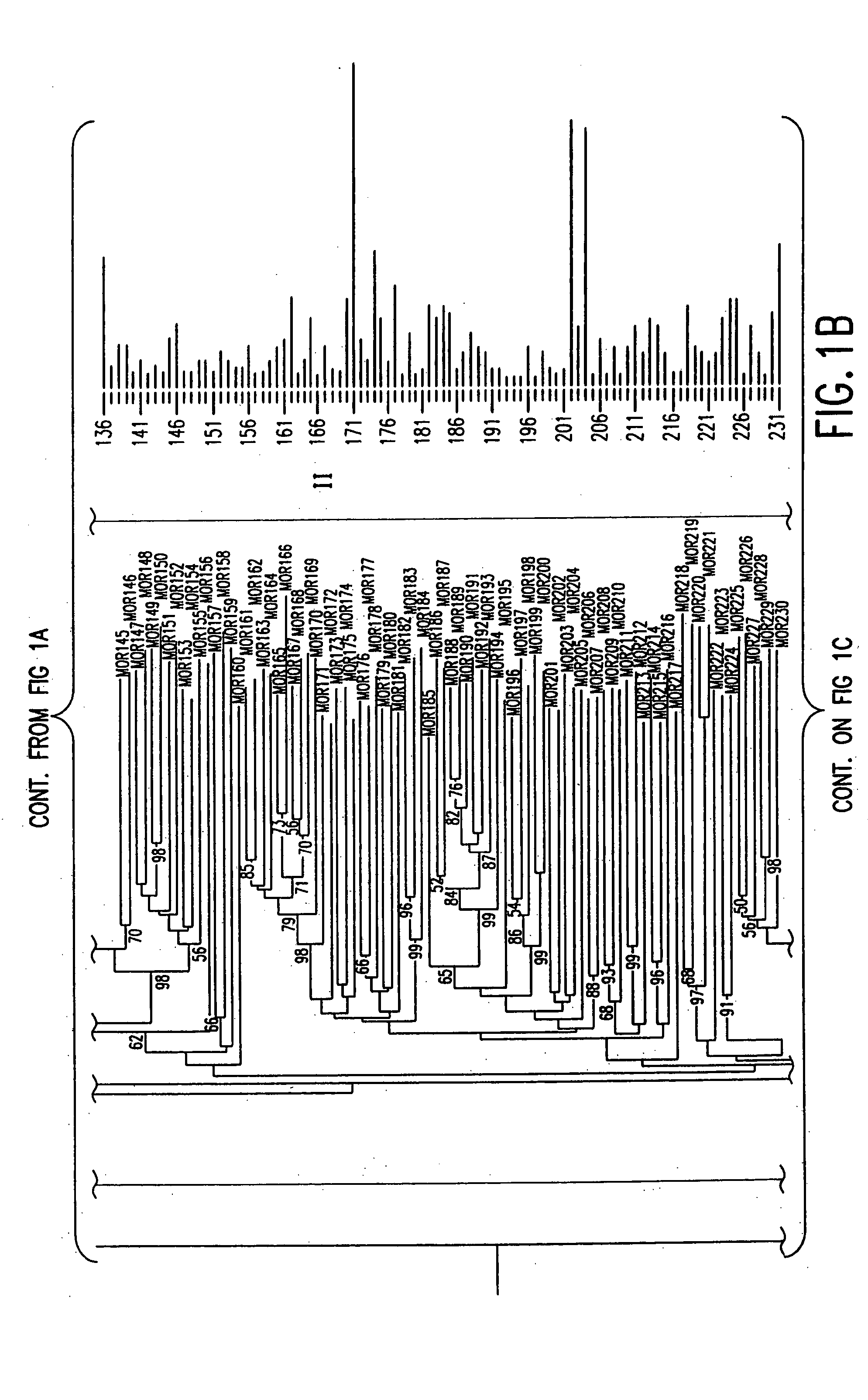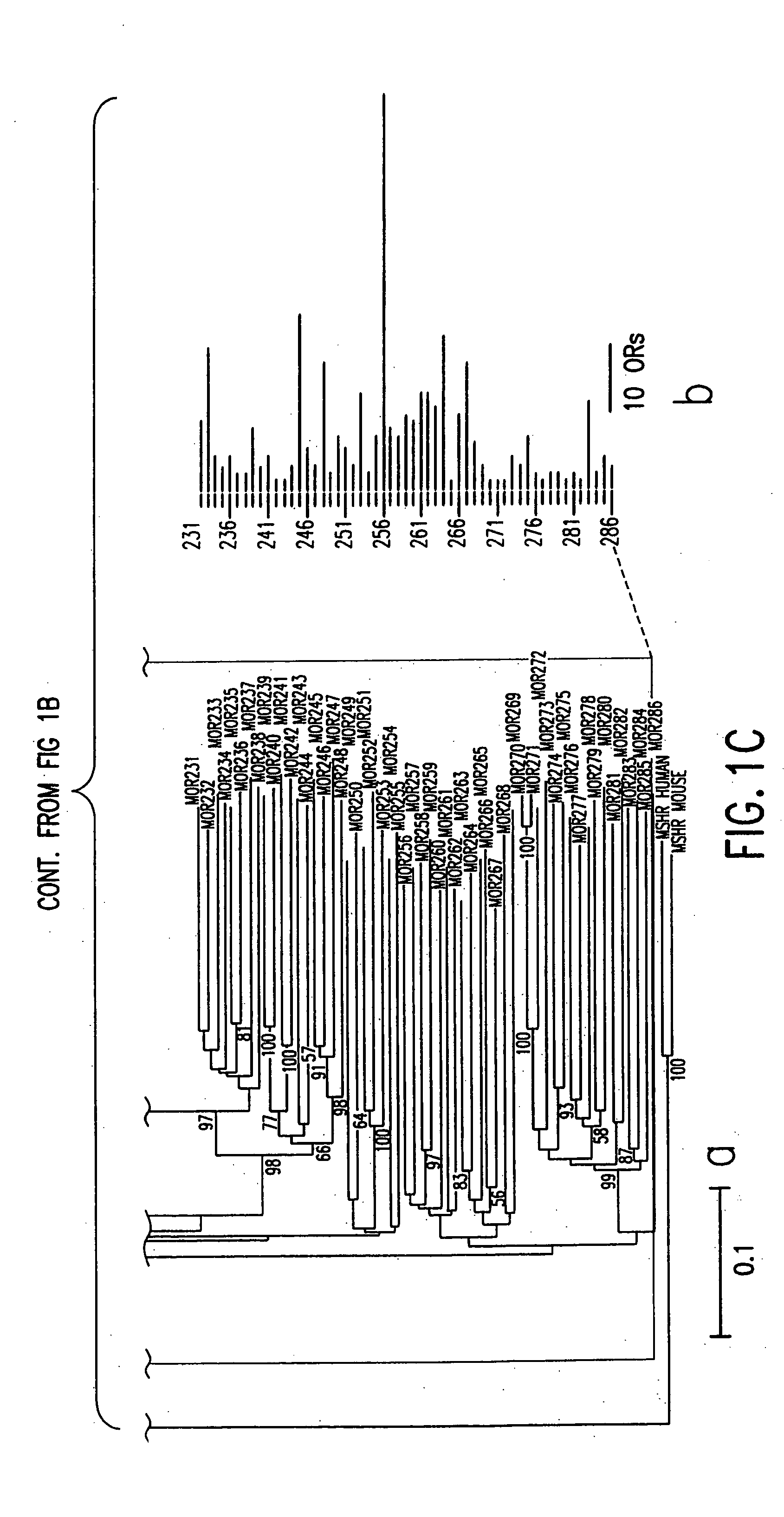Mouse olfactory receptor gene superfamily
a mouse olfactory receptor and gene superfamily technology, applied in the field of identification, isolation and characterization of mouse olfactory receptor (or) polypeptides, can solve the problem of failure to detect many genes
- Summary
- Abstract
- Description
- Claims
- Application Information
AI Technical Summary
Benefits of technology
Problems solved by technology
Method used
Image
Examples
example 1
[0062] An exhaustive TBLASTN search incorporating profile HMM (Hidden Markov models) search was used to obtain all the possible OR sequences from the Celera mouse genome using, for example, the data mining method represented by the flow diagram of FIG. 6. Human intact ORs were aligned to build profile HMMs and these models were utilized to search for mouse candidate OR genes. Conceptual translation was used to recover the original ORFs for possible pseudogenes. Duplicates were removed and resulting OR genes were mapped to genomic locations according to the mapping data of the scaffolds by Celera.
[0063] Methods
[0064] Profile HMM Classifier
[0065] Referring to FIG. 7a, all intact human OR protein sequences from the HORDE database (http: / / bioinformatics.weizmann.ac.il / HORDE) were aligned using ClustalW, and the alignments were used to build two profile HMMs (one for 49 Class I ORs 4c, the other for 273 Class II ORs 4c′) using the HMMER software package (http: / / hmmer.wustl...
example 2
Matches with known ORs
[0074] 122 mouse ORs were collected from the ORDB, and 362 mouse ORs were collected from Genbank using ‘olfactory receptors’ or ‘odorant receptors’ as a keyword when searching mouse genes (all databases as of Jun. 25, 2001). The ORs from the public database were matched with our mouse OR database using FASTA3. For each OR from the public database the best hit was chosen, and the percentage of protein identity was used for further analysis. Similarly, human ORs and rat ORs were also matched with our mouse OR database.
example 3
Matches with ORs from cDNA Sources and the Mouse EST Database
[0075] ORs labeled as originating from cDNA source material in the ORDB were selected, and each of these sequences was searched against our mouse OR database. Hits with >95% identity were considered as matches. The mouse EST database was downloaded from the NCBI server and BLASTN search was performed using every mouse OR DNA sequence as a query against the EST database. Hits with E-values <1e-100 were considered as matches.
PUM
| Property | Measurement | Unit |
|---|---|---|
| concentration | aaaaa | aaaaa |
| action potential | aaaaa | aaaaa |
| water-soluble | aaaaa | aaaaa |
Abstract
Description
Claims
Application Information
 Login to View More
Login to View More - R&D
- Intellectual Property
- Life Sciences
- Materials
- Tech Scout
- Unparalleled Data Quality
- Higher Quality Content
- 60% Fewer Hallucinations
Browse by: Latest US Patents, China's latest patents, Technical Efficacy Thesaurus, Application Domain, Technology Topic, Popular Technical Reports.
© 2025 PatSnap. All rights reserved.Legal|Privacy policy|Modern Slavery Act Transparency Statement|Sitemap|About US| Contact US: help@patsnap.com



